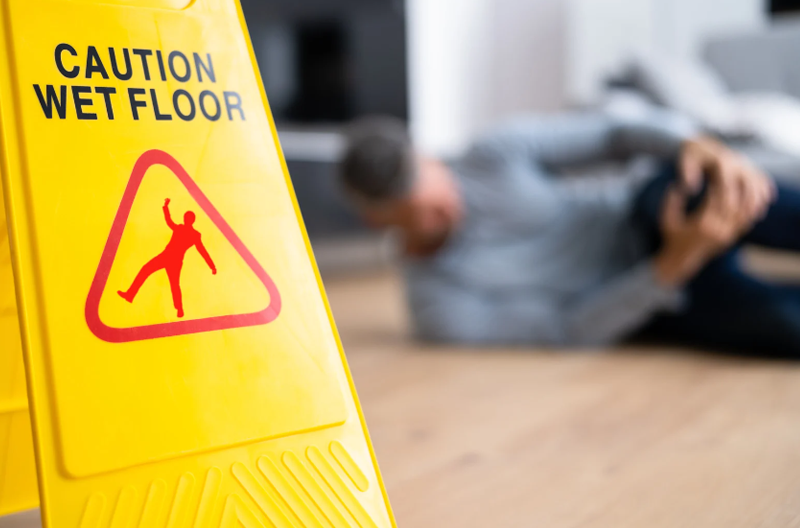The warmer weather has been known to bring about a rise in slip-and-fall claims as retailers begin to enter their busy season especially those that distribute gardening and outdoor supplies. As foot traffic increases, the risk of potential liability also increases. Slip-and-Fall litigation has continually been one of the largest liability exposures for retailers in all industries. It is important to be aware of the duties you owe to your customers and the steps needed to protect yourself and your business.
If a retailer knows or has “constructive knowledge” of a hazardous condition, it is possible that the company will be held liable in court. Historically, in order to be found liable, the customer was responsible for proving that the retailer had knowledge of and reasonable time to protect the customer from the hazard in question. Today, rather than requiring that the customer prove that the retailer did know about a hazard, states operate under a new doctrine that requires retailers to prove that they couldn’t remedy a hazardous condition within reasonable care.
Typically, an unwitnessed slip-and-fall claim would be difficult to defend against. Many businesses utilize camera systems to help prevent these types of claims. We have seen many situations with slip-and-fall claims that were caught on camera and were then denied, where otherwise the insurance carrier would have paid out hundreds of thousands of dollars.
False liability claims are adding to the problem as well. One common scam is someone spilling water on the floor and then pretending to slip and fall. With no proof of what happened, your business could quickly be forced into a settlement. If cameras are being utilized, you can not only defeat the claim but also potentially have the scammer prosecuted which prevents them from scamming other businesses.
Another one of the best defenses that a company can have is an up-to-date log of activity that proves that reasonable care was taken in continually monitoring the premises for the presence of any hazards both inside and outside. It is important to include hourly surveys of a defined route through the business, appropriate warnings posted inside and outside the building, and an accurate and up to date maintenance log.
In order to ensure that you are utilizing a floor and maintenance log to its full potential, it is important to do the following:
- Determine when the hourly log should be completed
- Create a schedule to hold specific employees responsible for completing the log every hour
- Create a consistent route for employees to follow to ensure they are visually inspecting all areas of the store
- Determine what hazards employees should be looking for
- Define a course of action for employees to follow upon discovering a hazard
- Find a space to store past and present Hourly Floor and Aisle Maintenance Logs
- Monitor logs for completeness and authenticity
In addition, it is important to take immediate steps to reduce risks. By taking the following direct steps your business can prevent even more potential slip and fall incidents:
- Implement a policy where any spills are taken care of immediately
- Place wet floor signs by doorways during inclement weather
- Place floormats in strategic locations to help soak up excess water from outside during inclement weather
- Choose slip resistant flooring inside your business when able
- Make sure there is adequate lighting inside and outside of your business to eliminate any additional risk
For more information on steps you can use to avoid claims like these visit our Loss Control Center.

